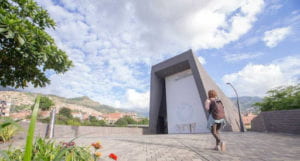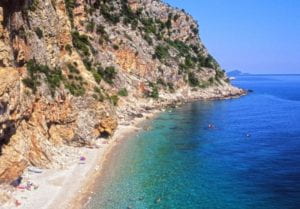By: Katherine Rivard
In the fall of 2019, the New York Times published an article about how Colombia, Rwanda, and Croatia have rebranded themselves, transforming from wartorn countries to blossoming centers of tourism. And while these transformations have indeed taken place, the Times misplaced its praise for the improvements. Beaches and wildlife refuges as well as national campaigns surely helped boost tourism, but the transformations that continue to draw people to these places are largely thanks to the initiative and creativity of cities.
The Times also notes the success of Rwanda’s marketing around gorillas, while brushing over Colombia’s guerillas. The Colombian government is still unable to end guerilla activity in certain areas of the country, areas that are classified as “Level 4: Do Not Travel” by the U.S. Department of State. But even when national governments flounder or are focused on basic duties, cities are capable of making visible changes that lure new visitors.
Here’s a closer look at how cities have helped rebrand Rwanda, Colombia, and Croatia.
- Acknowledge the country’s history.
No country or government loves to flaunt its past mistakes, let alone publicize continued unrest. While national governments might not fully admit their roles in conflict from recent years, cities can help teach visitors and locals about the tragedies that the countries have faced. Museums and memorials serve as places for education, reflection, and healing. In Medellin, the House of Memory Museum is a stunning collection of multimedia pieces that began as a project by the Victim Assistance Program of Medellin City Hall. It aims to provide a place for education and discussion surrounding the region and countries history of armed conflict.

Meanwhile, the Kigali Genocide Memorial keeps alive the memory of the 1994 genocide in Rwanda and teaches about peace. The City of Kigali and the Aegis Trust created the memorial in 2004. Complete with 3 permanent exhibitions, a children’s memorial, and more, the memorial sees thousands of visitors each week.
2. Make sure people can move around.
Cities need efficient transportation systems for locals and visitors alike. Successful cities usually have many types of well-functioning transportation options. In Medellin, one can choose from Ubers, cabs, a pristine metro, bikes, or the much-lauded metrocables; Dubrovnik offers visitors a different cablecar option, moving from Old Town to the top of a nearby mountain; and in Zagreb, trams have been one of the most efficient means of urban travel since their arrival 1891.
3. Don’t just talk up your city, but the at large.
Many cities are surrounded by incredible natural resources, and cities are usually the landing point for visitors interested in exploring these options. By promoting tours outside of the city and providing information centers for tourists, cities give a boost to the broader region, while benefiting from the tourists who pass through. Colombian cities win when travellers stop and visit before heading off to coffee plantations or trips to national parks. Meanwhile, cities offer a stop for visitors in Croatia before heading to the beach, or in Rwanda, where many seek to visit gorilla sanctuaries.
4. Find a symbol, even if it’s not quite your own.
Symbols, whether a legend, a famous local, or another part of the culture, can be used as a branding tool for an area. In fact, sometimes several cities will claim the same symbol, even cities in different countries! Fernando Botero, one of Colombia’s most famous painters, has become a symbol for both Medellin and Bogota. Both cities have plenty of trinkets and nods to his work, including Parque Botero in Medellin and El Museo Botero in Bogota. Gorillas are synonymous with Kigali and saying Dubrovnik instantly bring crystal blue waters to mind.

5. Take up space in social feeds.
Sure, celebrities sometimes post cool pics that go viral, like when Ellen DeGeneres went to Rwanda in 2018. While not everyone can be like Ellen, you can be like that girl who you went to high school with who you still follow on Instagram. Social media feeds filled with pictures of sunsets on the Dalmatian coast or glasses full of colorful, fresh fruit juice being sipped in Cartagena can unconsciously push a destination onto someone’s bucket list. Cities that get more likes online, may ultimately get more visits in person. Additionally, social media can be a practical tool for tourists, as hashtags suggest new spots to visit based on pictures of foods, adventures, and beautiful locations others have posted.
6. Look at the successes of other cities, and then create your own success story.
This is the most important step, and where there is always room for growth. Cities must constantly create new initiatives and programs to ensure the needs of citizens, visitors, and businesses are being addressed. While the other steps often happen naturally, it is up to local government and organizations to learn and listen from other cities.
Networks and global initiatives allow cities to share best practices and to set appropriate standards and goals. Dubrovnik participates in multiple networks through URBACT, a program within the European Union’s European Regional Development Fund, which aims “ to foster sustainable integrated urban development in cities across Europe.” Similar opportunities for cities include participating in C40 Cities or UNESCO’s Creative Cities Network.
Tourists are travelling more frequently and further than ever before. By rebranding themselves, cities that were once overlooked can join the spotlife and create a renaissance for their municipality and in their country at large.